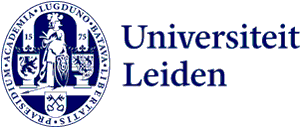
Robots and Society (RO-SO) Tutorial at RO-MAN 2021 Conference
The University of Oslo and Leiden University have joined forces to organise a Tutorial on Robots and Society: Ethical, Legal, and Technical Perspectives on Integrating Robots in the Home and Healthcare Systems and Services at the IEEE International Conference on Robot and Human Interactive Communication.
The latest advanced technologies, such as intelligent robots and Artificial Intelligence (AI) based systems, present both challenges and opportunities for different fields. One of the fields where robots seem to be promising is home and healthcare services. These types of assistive and social robots seem to be well integrated already in certain cultures, such as in Japan, due to the (techno-) animism tradition well-embedded in their society. In Western culture, however, robots are not (yet) as well accepted as being part of our everyday lives, in our homes, hospitals, rehabilitation or other care processes.
Introduding robots in the home to perform sensible tasks is not straightforward and raises many questions concerning the quality and safety of care delivered. The Robotics and Intelligent Systems (ROBIN) Research Group and the Norwegian Research Center for Computers and Law (NRCCL) from the University of Oslo, and eLaw - Center for Law and Digital Technologies of Leiden University have collaborated to organise a tutorial at an international conference to find out what these questions are.
Robots and Society
The Robots and Society tutorial is part of the 30th IEEE International Conference on Robot and Human Interactive Communication (ROMAN 2021). RO-SO focuses on providing an overview and discussing the ethical, legal, and technical perspectives, including challenges, dilemmas, and advantages and opportunities of integrating robots as part of home and healthcare systems and services.
Practical information
See this website for the event.
Time and place: 12 August 2021, Online - Zoom
Guiding questions
The following two questions will guide the overall objective:
1. How does the meaning of good care change when we integrate robots as part of the home and healthcare systems and services? What does good care mean when we integrate assistive robots as part of the home and healthcare services?
2. What are some of the ethical, legal, and technical challenges and opportunities when integrating assistive care robots in the home and healthcare services?
Intended audience
The intended audience of this tutorial is junior and senior academics and companies, but also other organisations interested in different aspects of integrating robots in healthcare systems and services.
List of addressed topics
The topics in this tutorial cover directly or indirectly:
1. Ethical dilemmas and challenges when integrating robots in healthcare services
2. Legal standards, laws, and regulations concerning robots
3. Privacy, safety, and control aspects
4. Designing for inclusion and diversity of potential users
5. Robots as welfare technologies
6. Human and robot autonomy
7. Technical challenges and opportunities with care robots for good care
8. Concept vacuum: do we need other concepts? Are some of the current concepts obsolete and need to be discarded? Or do we need some of the concepts to develop further?
Organizers
Dr. Diana Saplacan, ROBIN, University of Oslo
Prof. Jim Tørresen, ROBIN, University of Oslo
Prof. Tobias Mahler, NRCCL, University of Oslo
Dr. Eduard Fosch Villaronga, eLaw, Leiden University
Acknowledgments
This work is partially supported by The Research Council of Norway as a part of the Multimodal Elderly Care systems (MECS) project, under grant agreement 247697, and Vulnerability in the Robot Society (VIROS) project under grant agreement 288285.
